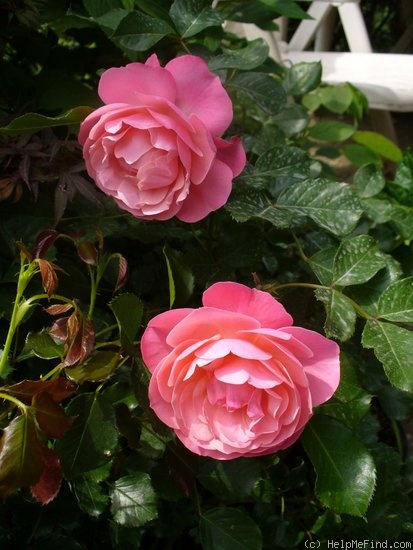|
|
'Segovia Castle' rose Description

Photo courtesy of vtma
Class:
Mini-Flora, Shrub. (Series: Castle ® Collection)
Bloom:
Salmon-pink. [Orange-pink.] Salmon-pink. Mild, moderate, rose fragrance. 30 to 35 petals. Average diameter 2". Small to medium, full (26-40 petals), borne mostly solitary, in small clusters, globular, old-fashioned bloom form. Blooms in flushes throughout the season.
Habit:
Medium, bushy, upright. Glossy, semi-glossy, medium green, dark green foliage. 7 leaflets.
Height: 2' to 39" (60 to 100cm). Width: 20" to 2' (50 to 60cm).
Growing:
USDA zone 6b through 9b (default). Can be used for beds and borders.
Patents:
Canada - Patent No: 3596 on 3 Sep 2009 Application No: 06-5262 on 7 Mar 2006 Rights surrendered on August 9, 2011.
Denomination: 'Poulcas024'
Trade name: Segovia Castle
'Poulcas024' originated from the controlled crossing in 1995 of an unnamed female parent with the male parent, 'Poulcs007' in Fredensborg, Denmark. United States - Patent No: PP 16,961 on 8 Aug 2006 VIEW USPTO PATENTApplication No: 11/131,739 on 17 May 2005 Inventors: Olesen; Mogens N. (Fredensborg, DK)
Assignee: Poulsen Roser A/S (Fredensborg, DK)
The present invention constitutes a new and distinct variety of garden rose plant which originated from a controlled crossing between the female seed parent, an unnamed seedling, and the male pollen parent `Poulcs007`, a variety created by the same inventor described and illustrated in U.S. Plant Pat. No. 15,161. The two parents were crossed during the summer of 1995
Notes:
The patent states 'POUlcas024' has "300 to 315 petals total, 45 of which are petaloid", which is impossible.
|